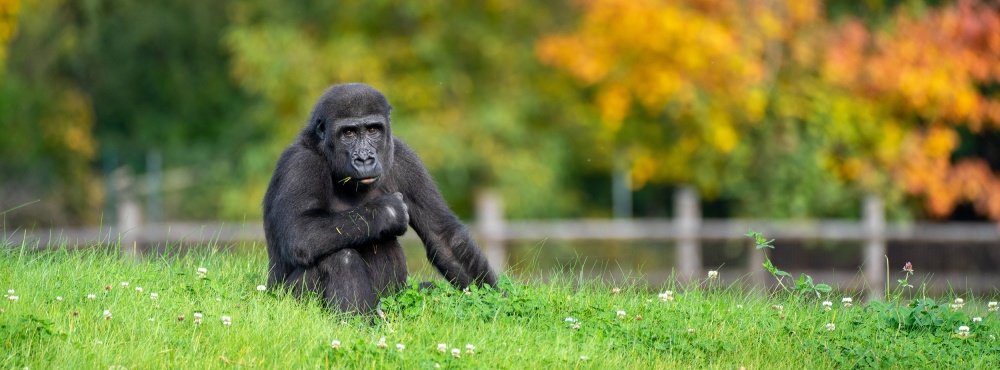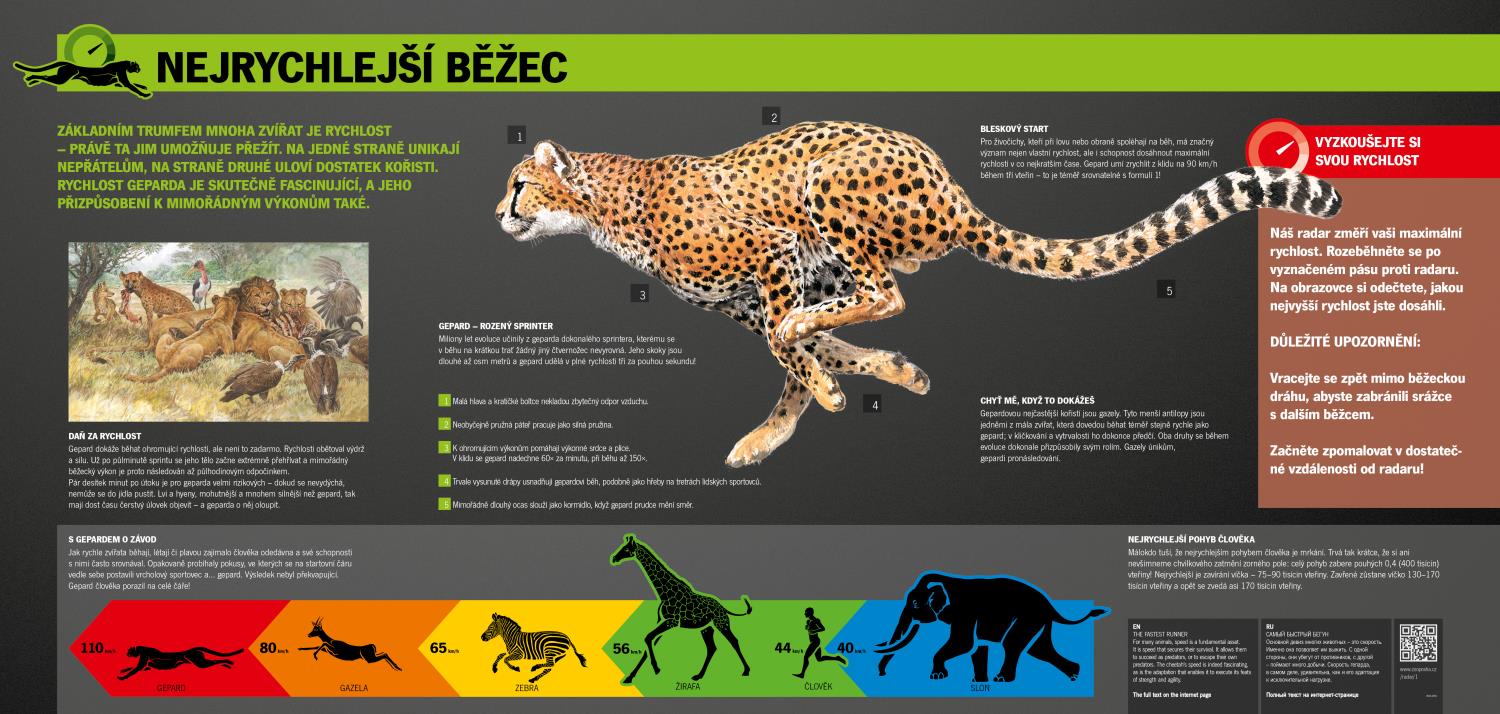The fastest runner

For many animals, speed is a fundamental asset. It is speed that secures their survival. It allows them to succeed as predators, or to escape their own predators. The cheetah’s speed is indeed fascinating, as is the adaptation that enables it to execute its feats of strength and agility.
 Photo: Petr Hamerník, Prague Zoo
Photo: Petr Hamerník, Prague Zoo
Cheetah – a Natural-born Sprinter
Millions of years’ worth of evolution has shaped the cheetah into a consummate sprinter that no other quadruped can, over short distances, hope to outrun. The cheetah can cover up to eight meters in a single leap – and pack three leaps into a single second when running at top speed!
- To reduce air drag, it has evolved a small head and short ears.
- Its extraordinarily supple backbone acts like a powerful spring.
- Its stunning feats of strength and agility also owe much to its powerful heart and lungs. At rest, the cheetah takes 60 breaths a minute; when running, up to 150 breaths.
- Its non-retractable claws give a running cheetah purchase, just like cleats on track shoes.
- Its remarkably long tail serves as a rudder to steer by when the cheetah executes sharp changes of direction.
Lightning Start
In animals that rely on their running prowess for food or defense it is not only speed per se that matters, but also the ability to reach maximum velocity in the shortest possible time. The cheetah can accelerate to 90 km/h from a standing start in just three seconds – that is almost comparable to a Formula One race car!
Catch Me If You Can
The cheetah’s most common prey are gazelles. These petite antelopes are one of a handful of animals that can almost outrace the cheetah. In fact, when it comes to zigzagging and endurance, they do outrace the cheetah. In the course of long evolution, the cheetah and the gazelle have grown into their roles perfectly, the gazelles becoming the consummate fugitive, the cheetah the consummate pursuer.
Speed Comes at a Price
The cheetah may be a stunningly fast sprinter, but it comes at a cost. To get speed, it has sacrificed endurance and strength. If its sprint lasts more than half a minute, its body begins to overheat. That is why an exhausting race must be followed by a rest. The first tens of minutes after bringing down its prey are risky for the cheetah: until it catches its breath, it cannot start feasting. In the meantime, lions and hyenas – creatures larger and much stronger than the cheetah – have plenty of time to discover the fresh kill – and steal it from the cheetah.
Racing the Cheetah
Since time immemorial, man has been fascinated by running, flying and swimming animals and wanted to know how fast they were and whether he could hold his own against them. There have been repeated experimental races in which the starting line was toed by a top athlete – and pawed by a cheetah. The races always had the same unsurprising result: the man suffered a crushing defeat!
- Cheetah: 110 km/h
- Gazelle: 80 km/h
- Zebra: 65 km/h
- Giraffe: 56 km/h
- Human: 44 km/h
- Elephant: 40 km/h
Our Fastest Movement
Very few people know that the fastest movement the human body is capable of is blinking. It is so fast, it lasts such a short time, that we fail to even notice this momentary eclipse of our field of vision: the entire movement takes a measly 0.4 seconds (400 thousandths of a second). The fastest part of the movement is the closing of the eyelid: this takes between 75 and 90 thousandths of a second. The eyelid stays closed for between 130 and 170 thousandths of a second, and then it takes a further 170 thousands of a second to open again.

ZOOPRAHA.CZ
Contacts
- The Prague zoological garden
U Trojskeho zamku 120/3
171 00 Praha 7
Phone.: (+420) 296 112 230 (public relations department)
e-mail: zoopraha@zoopraha.cz
Others








